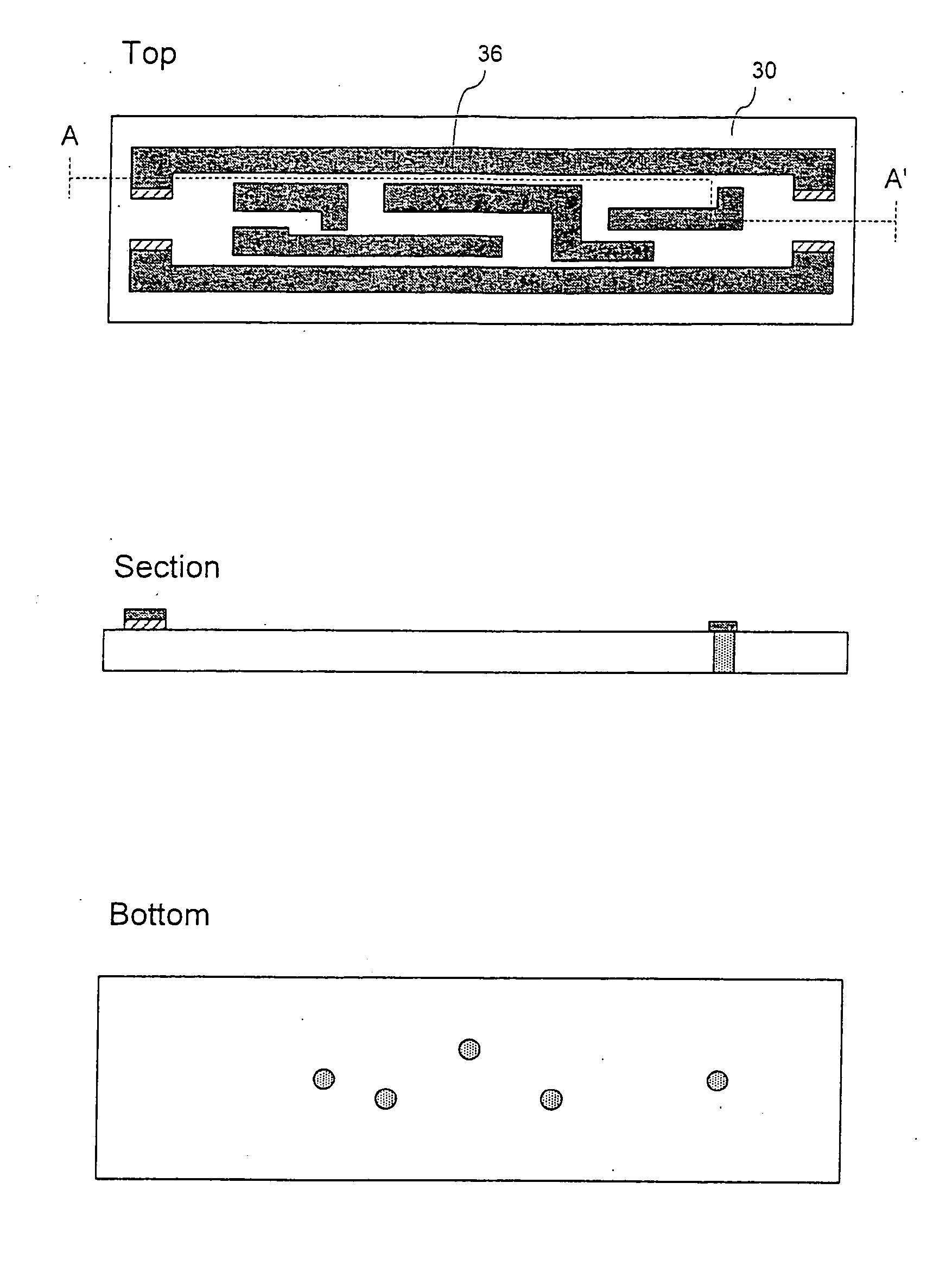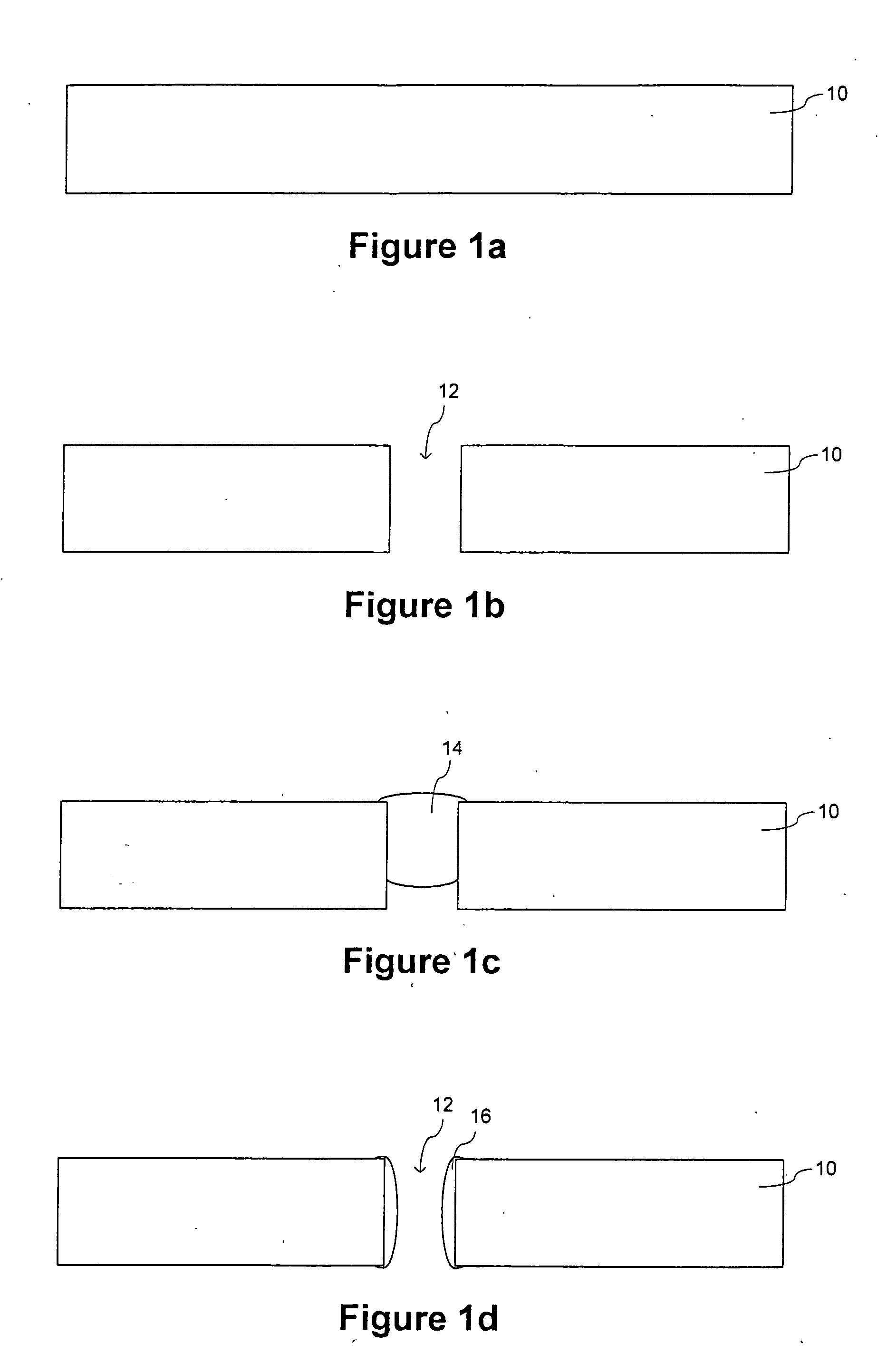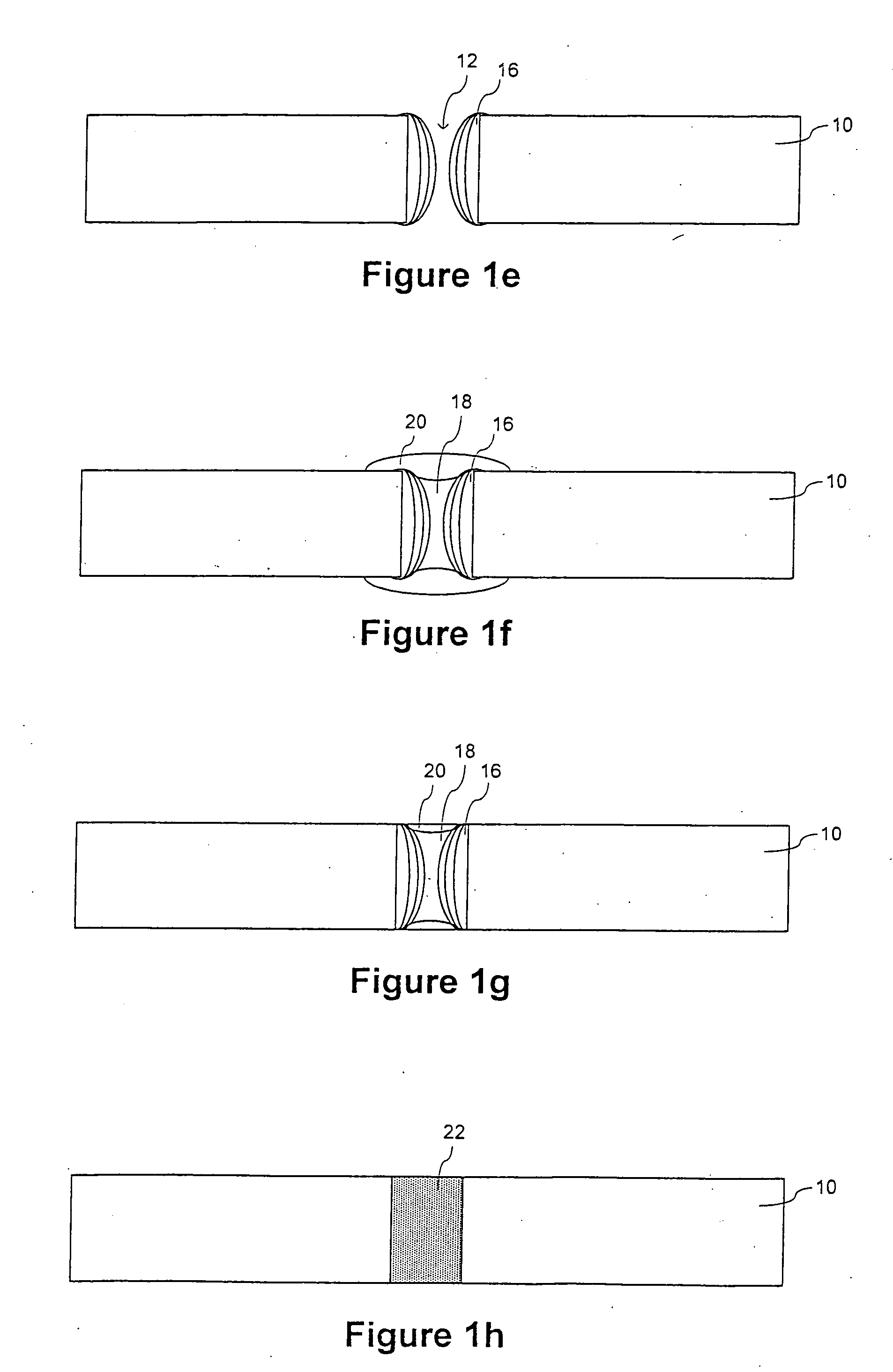High reliability multilayer circuit substrates and methods for their formation
a multi-layer circuit and substrate technology, applied in the field of semiconductor device fabrication, can solve the problems of limiting the usefulness of multi-layer substrates formed by high temperature processing, limiting the use of refractory substrates, and complex hybrid circuits that typically require equally complex interconnection structures, etc., to achieve the effect of facilitating the production of highly reliable substrates, reducing or eliminating the yield of misalignment, and high tunable properties
- Summary
- Abstract
- Description
- Claims
- Application Information
AI Technical Summary
Benefits of technology
Problems solved by technology
Method used
Image
Examples
Embodiment Construction
[0023] A preferred embodiment of a method for producing a multilayer circuit substrate is now described in the context of production of a hermetic blood glucose sensor circuit. It should be understood that the processing performed in the preferred embodiment represents one implementation of the invention and that the techniques of the invention have a variety of alternative applications, examples of which are provided after the description of the preferred embodiment.
[0024]FIGS. 1a-1h show structures formed during processing in accordance with the preferred embodiment to form a hermetic via in a dielectric base substrate. While the processing of FIGS. 1a-1h illustrates a single via, it will be appreciated that multiple vias may be produced simultaneously using the illustrated techniques.
[0025]FIG. 1a shows a cross-sectional view of a portion of a dielectric base substrate 10. The base substrate is preferably a sheet of 96% purity alumina (Al2O3) that is pre-fired such that shrinka...
PUM
| Property | Measurement | Unit |
|---|---|---|
| thickness | aaaaa | aaaaa |
| shrinkage | aaaaa | aaaaa |
| shrinkage | aaaaa | aaaaa |
Abstract
Description
Claims
Application Information
 Login to View More
Login to View More - R&D
- Intellectual Property
- Life Sciences
- Materials
- Tech Scout
- Unparalleled Data Quality
- Higher Quality Content
- 60% Fewer Hallucinations
Browse by: Latest US Patents, China's latest patents, Technical Efficacy Thesaurus, Application Domain, Technology Topic, Popular Technical Reports.
© 2025 PatSnap. All rights reserved.Legal|Privacy policy|Modern Slavery Act Transparency Statement|Sitemap|About US| Contact US: help@patsnap.com



